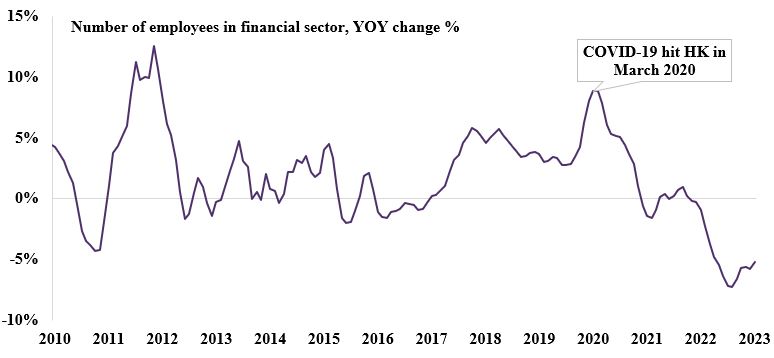What challenges and opportunities does the Great Bay Area Development pose for Hong Kong? With quarantine and COVID-19 testing now lifted, Hong Kong stands at the beginning of a new chapter. In the second article of this series, Donglai Luo, RICS Senior Economist, examines policy measures designed to support economic growth in the region.
Medium-term measures to support economic growth
The Hong Kong-Zhuhai-Macau Bridge, inactive during the pandemic, is expected to see a return of traffic flow in 2023. The Greater Bay Area concept aims to combine the advantages of the three markets, with Hong Kong benefiting from cooperation with Guangdong province for investment and international standards. Guangdong province is renowned for its manufacturing hubs, such as Shenzhen and Guangzhou. Policymakers are hopeful that the right blend of these strengths will rival the likes of the New York Bay Area, San Francisco Bay Area or Tokyo Bay Area.
The goal of the Greater Bay Area plan is ambitious and presents both challenges and opportunities for Hong Kong, according to the RICS Colliers International report on the initiative. The cities in the Greater Bay Area, including Hong Kong and Macao, will collaborate to build a cohesive city cluster. This collaboration aims to promote the free flow of talent, logistics, capital and other production factors within the region, thereby enhancing the economic efficiency, openness, and internationalisation of the Guangdong-Hong Kong-Macao Greater Bay Area.
These developments present promising opportunities. However, for Hong Kong to benefit from the plan it needs to maintain its leading position and unique economic and legal system while deepening its integration with the economic system in mainland China.
“Policymakers are hopeful that the right blend of these strengths will rival the likes of the New York Bay Area, San Francisco Bay Area or Tokyo Bay Area.”
Attracting capital and investment to Greater Bay Area
In October 2022, the Hong Kong government announced its plans to establish a fund worth 30 billion HKD (approximately 3.8 billion USD) to attract capital and support investments. This initiative aims to support business growth in Hong Kong and maintain its leading position in the region for financial services. Due to the dollar peg, it is still easier for foreign investors to establish a base in Hong Kong rather than mainland China. On the front of international trade, to meet the increasing demand from China, Hong Kong also contributes to the growth of the Greater Bay Area through its trade service and logistics sectors. However, competition from cities in the Greater Bay Area, such as Guangzhou and Shenzhen, may challenge Hong Kong’s traditional strengths and complicate the prospects of the Greater Bay Area plan.
Promoting technology and innovation
As a key aspect of the Greater Bay Area plan, Hong Kong aims to promote technological innovation. The Hong Kong Innovation and Technology Development Blueprint, released in December 2022, outlines the government's plans to promote ‘new industrialisation’ through increased land supply and upgraded infrastructure. Start-ups are also supported to enhance the innovation and technology ecosystem in the city.
This effort by the new administration aims to compete on a global scale, where Singapore currently ranks 7th on the Global Innovation Index compared to Hong Kong's 14th. To compete with Singapore, the Hong Kong administration must attract more investments and start-ups in the technology industry. The recent move to welcome cryptocurrency companies, even when Singapore has been cautious, demonstrates the government's willingness to encourage financial innovation investments.
The overseas talent grab
In addition to facing internal and external competition, the Greater Bay Area may also encounter challenges regarding the talent outflow. Taking the traditionally strong financial sector, for example. Shown in Figure 1, the year-on-year (YOY) growth rate of employees in the financial sector has been sliding since early 2020 and remained negative since year 2021. The growth rate fell to -7.3% in October 2022, the lowest on record since the global financial crisis in 2008. Moreover, it is concerning that there has not been a significant improvement in employment since COVID-19 restrictions were lifted by the administration at the end of 2022, suggesting suppressed demand for the talent in Hong Kong financial industry.

Figure 1: Hong Kong financial sector employment, YOY change % (source: Macrobond)
The new administration has introduced incentives to attract overseas talent, with the goal of bringing in over 100,000 top talents by 2025. These efforts include a special long-term pass for top earners, the removal of restrictions for hiring tech professionals and a conditional waiver of the stamp duty for property purchases.
“The new administration has introduced incentives to attract overseas talent, with the goal of bringing in over 100,000 top talents by 2025.”
The ‘talent grabbing plan’ is seen as the first countermeasure by the authority on the talent outflow issue, and the pragmatism reflected in the new administration's policy is expected to help address the concern. Nonetheless, time is needed to assess the policy's impact.
Through the Greater Bay Area initiative, the government intends to enhance technology and innovation in Hong Kong and address the pressing problem of talent outflow. These policy efforts and changing situations can have both direct and indirect effects on the property market.
In the final article in this series, we will explore the potential implications of these shifting dynamics on the property sector.





